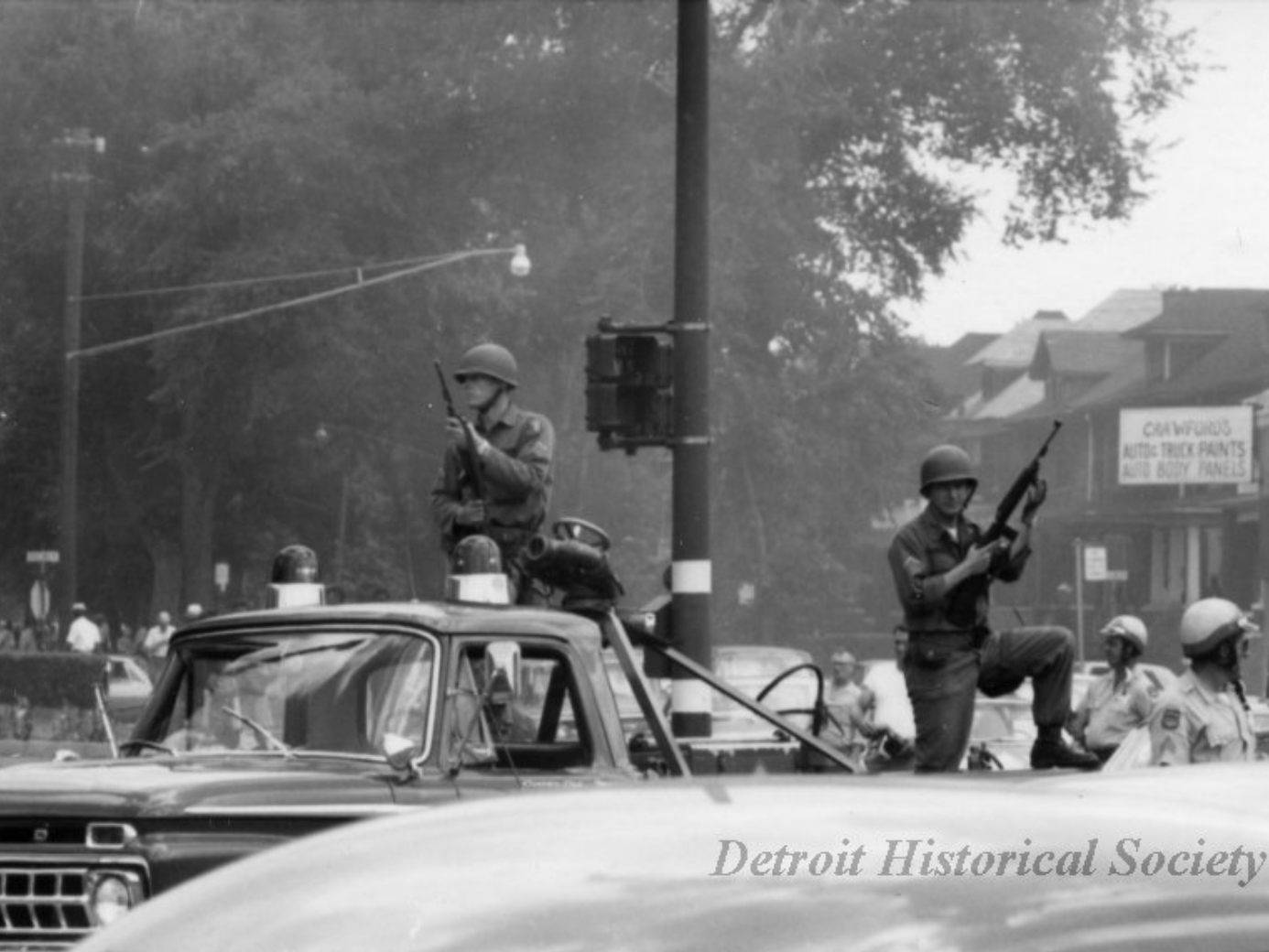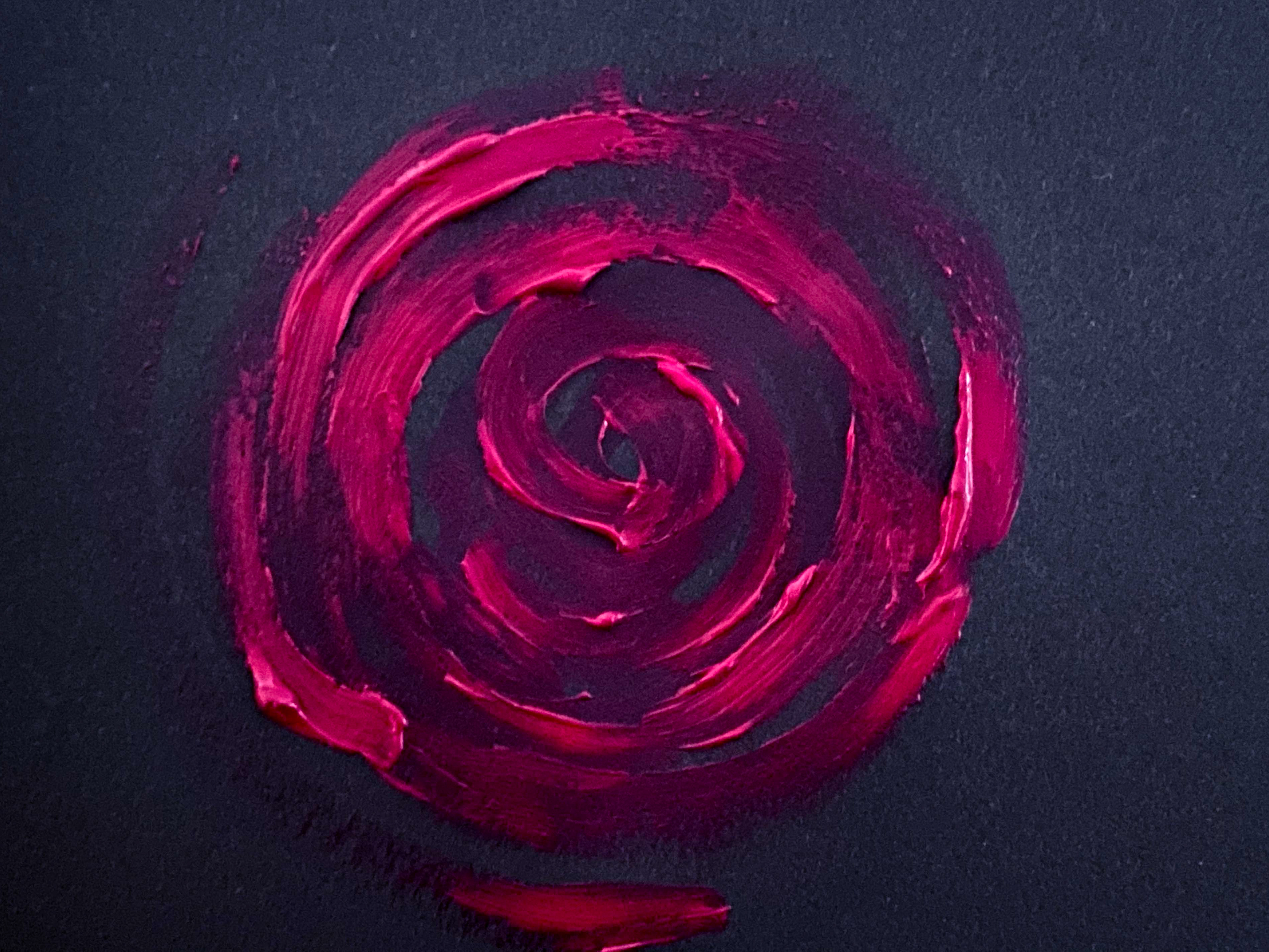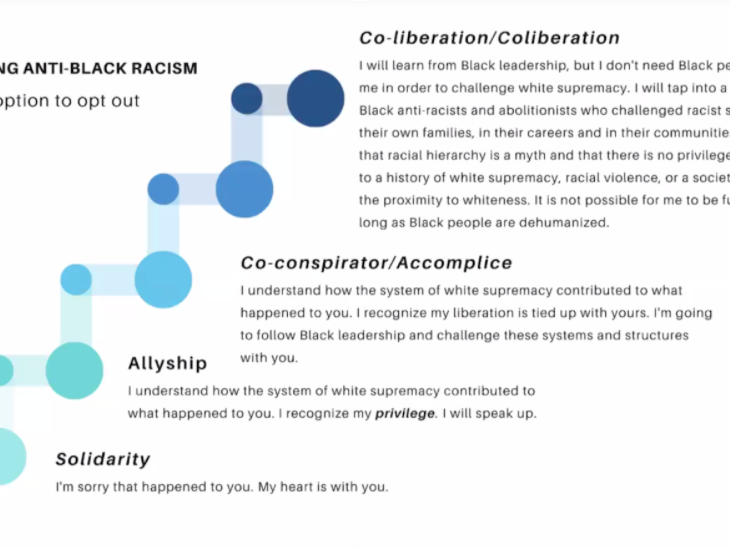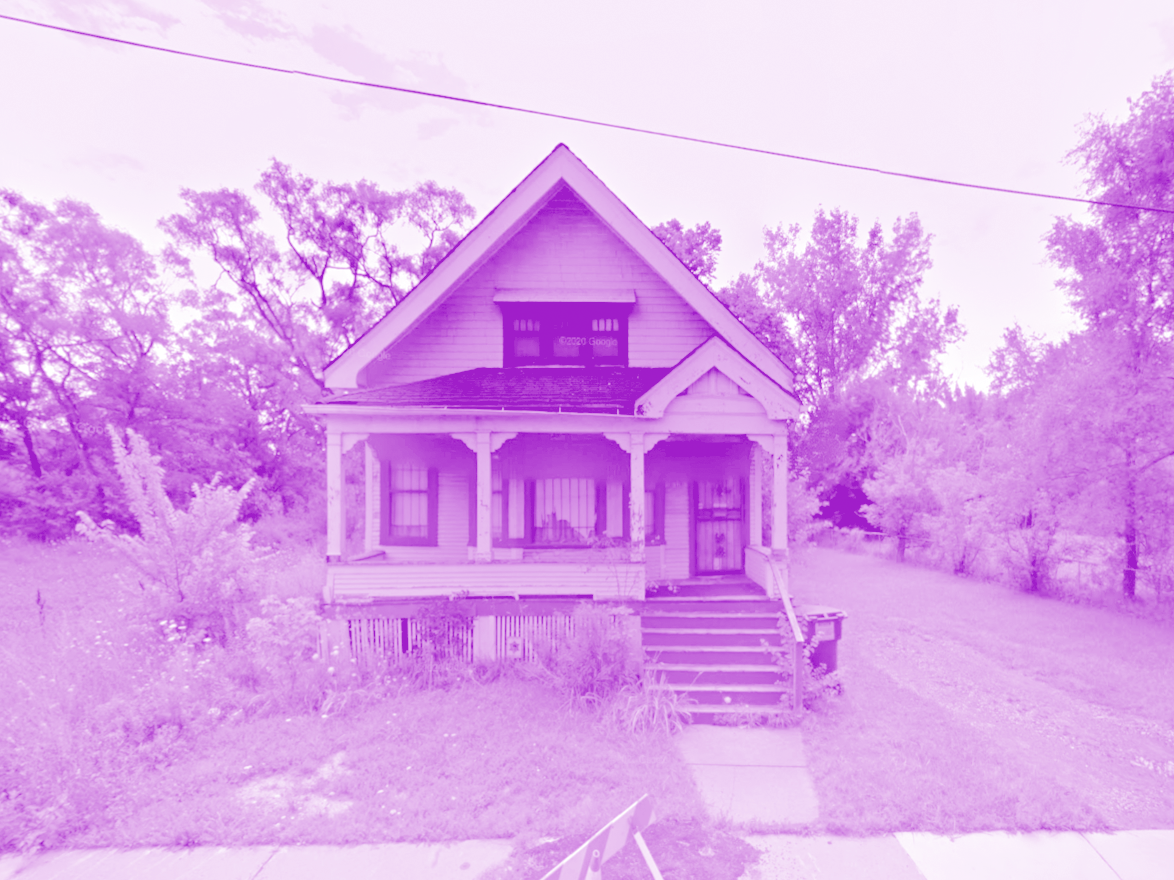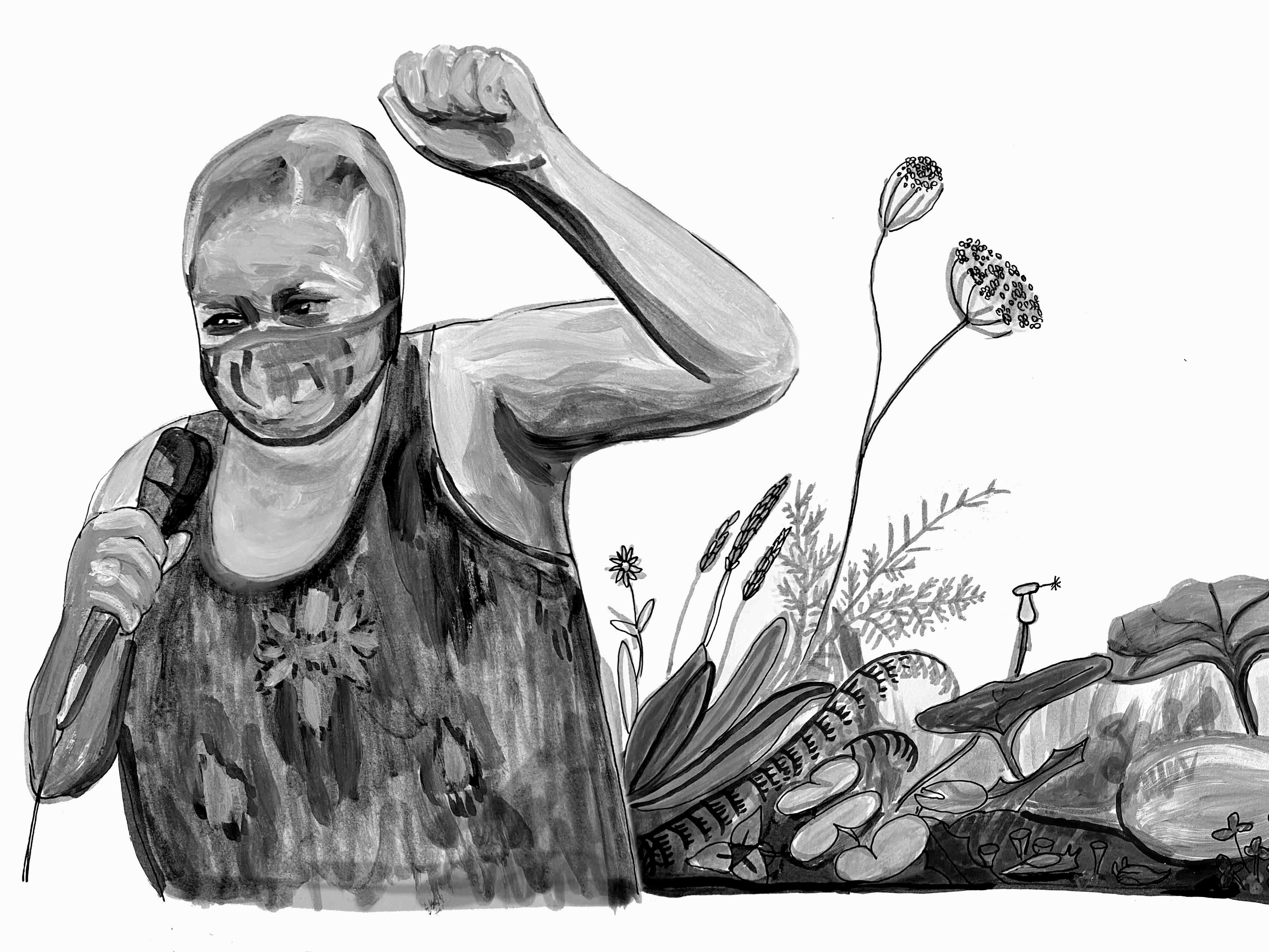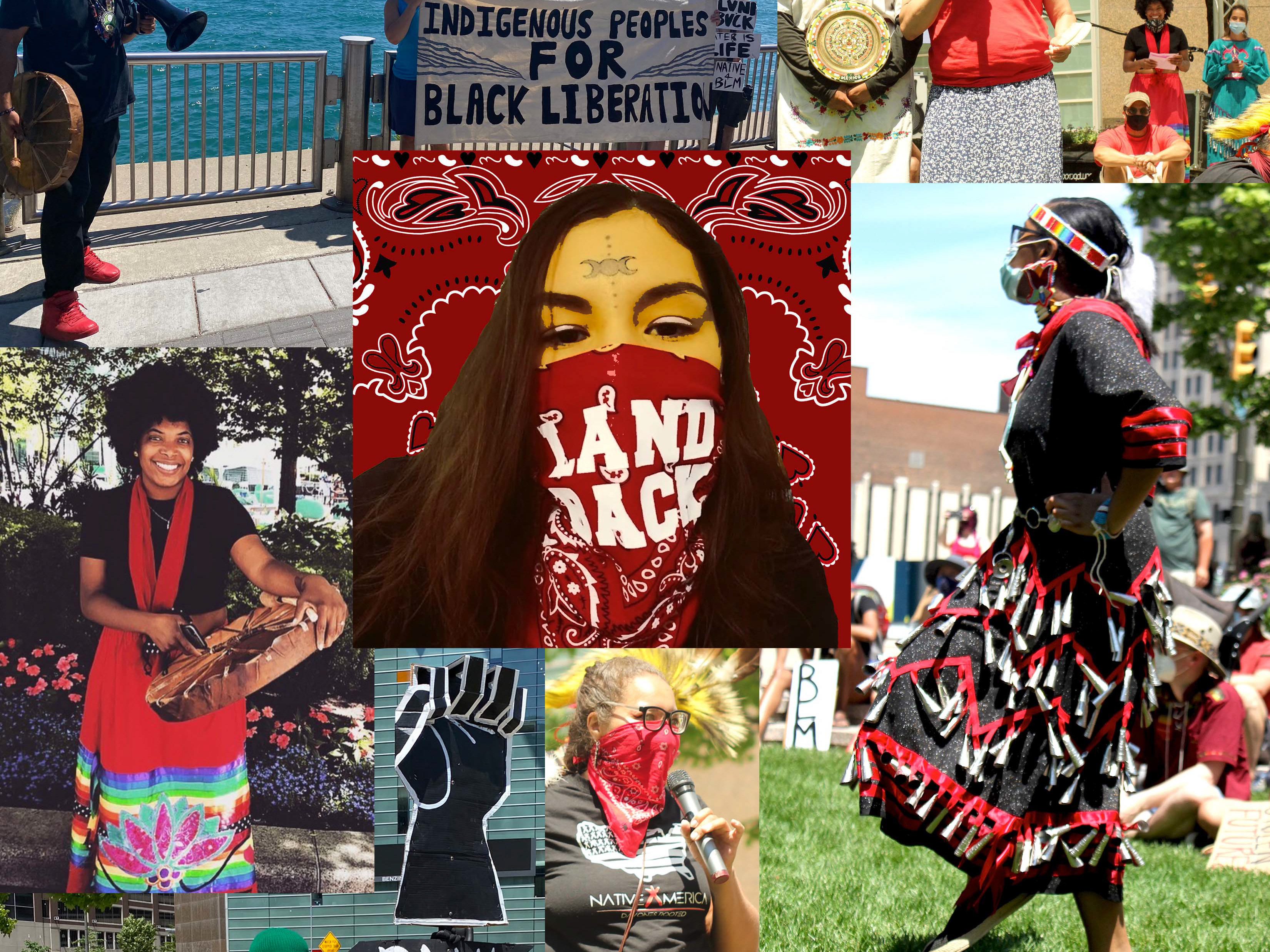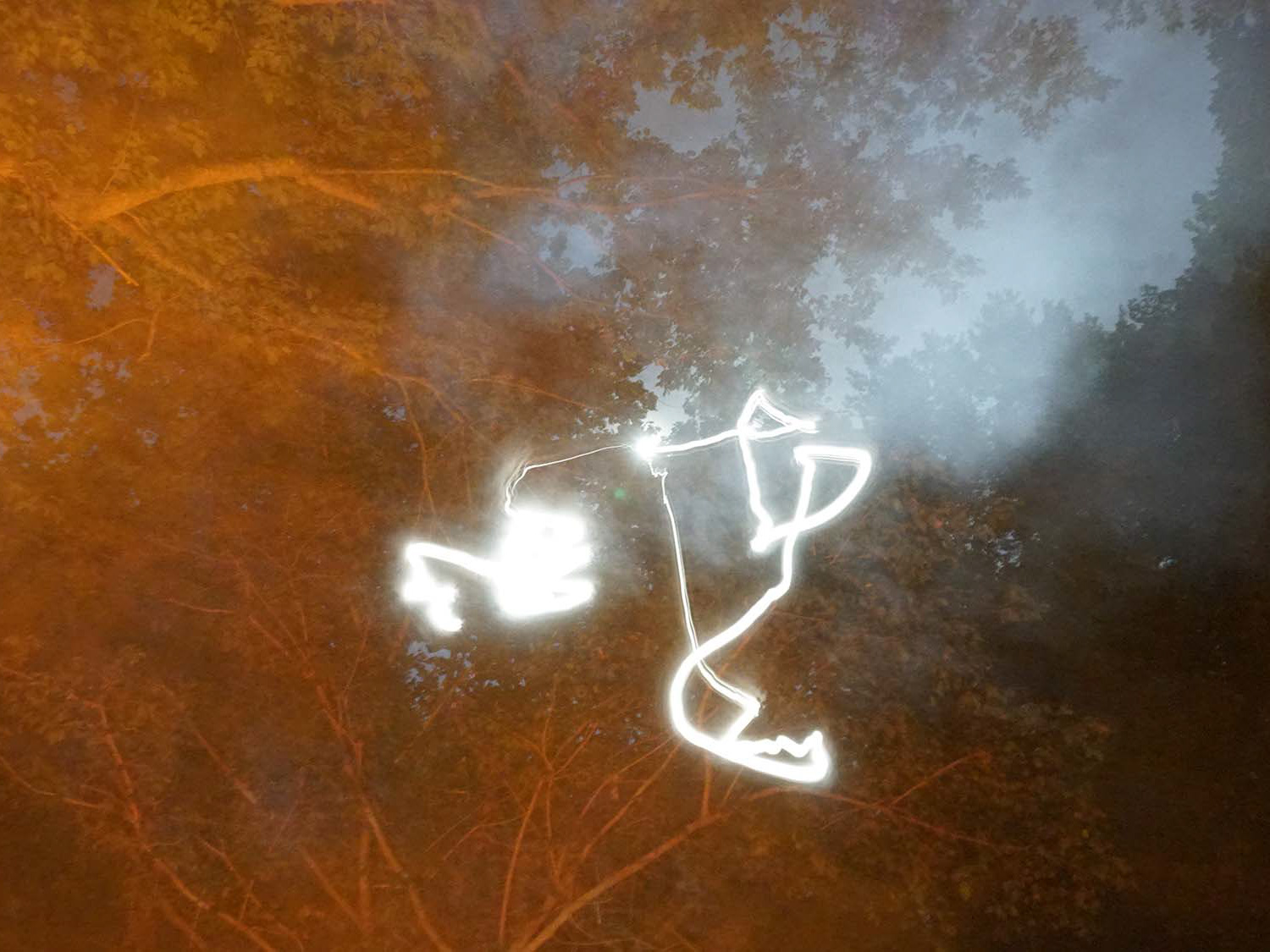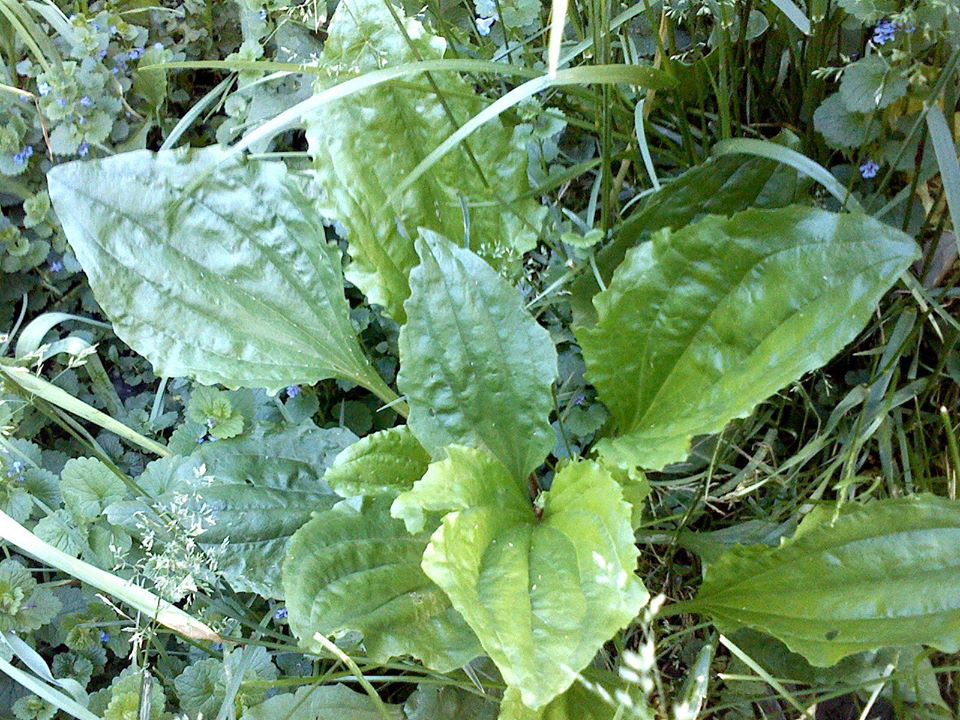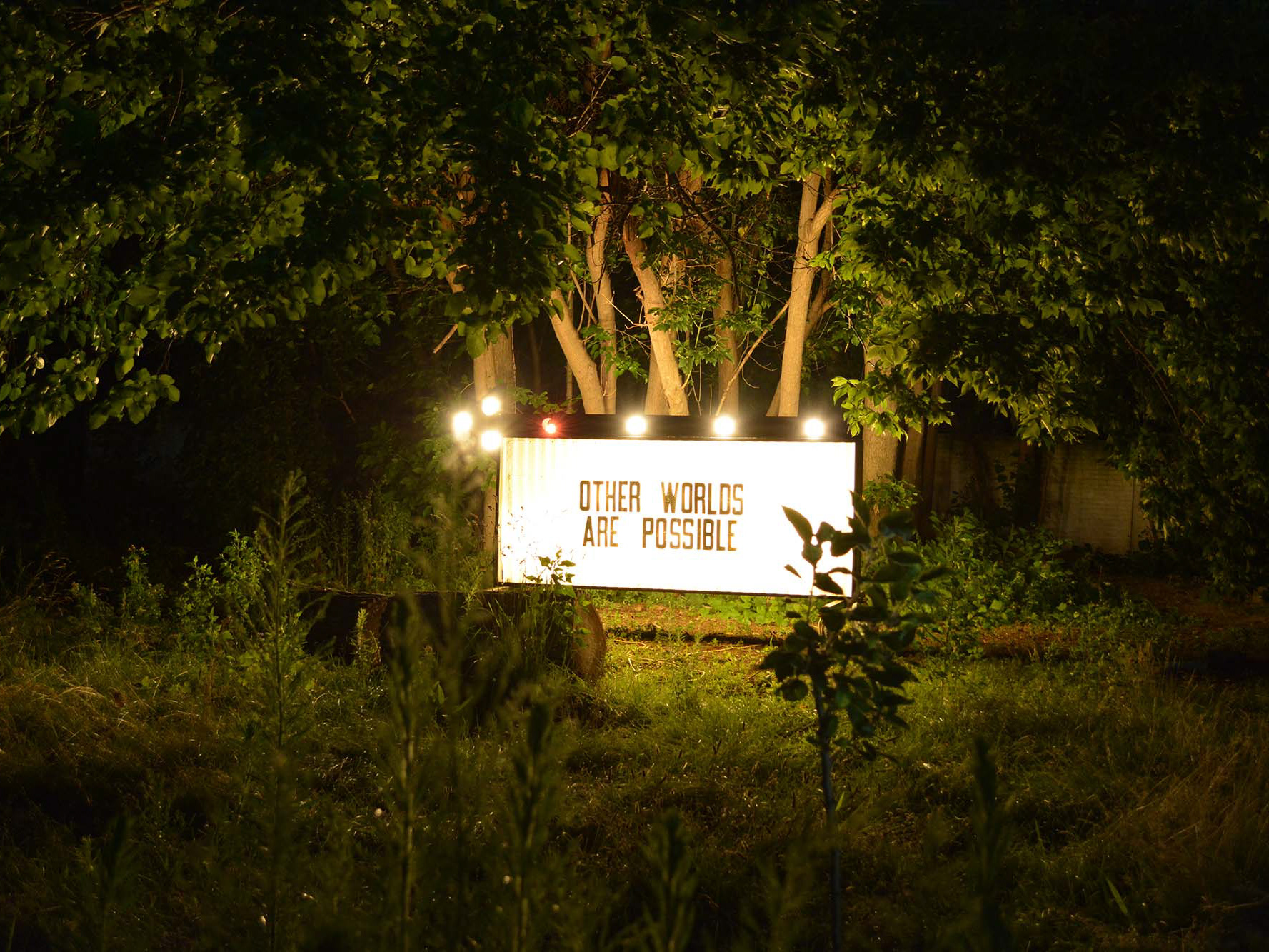war in the streets;
war in the trees;
war in the sub-divisions
of america
By Owolabi William Copeland and Bridget Quinn
This article is written to be read after “Breaking America’s Law”.
Owolabi: This summer, I was asked by the Detroit Chapter of the Audubon Society to write an article on what time it is today, on what is going on in the streets. This essay is our updated, uncensored response to this question, written with both conservationist audiences and Bullet Train’s community in mind.
My first response is that it’s the same time it’s been for the last 500 years on this continent, an era of unending war. There are many in our community who have been working for years on prison abolition and the criminal justice system. My experience is in 20 years of work in Detroit movement building, environmental justice, and Black/New Afrikan liberation so I will speak from my own perspective and not pretend to be an expert in that which I am not.
My second response is that the Virus is showing more and more people the inability or unwillingness of this social system to protect its own people or to have any vision of a future for its own people besides a vague notion of “going back (re-opening) to how things used to be.”
My third response is that more white people are now starting to wake up to the reality of this war and some of them want to stop it and a few of them are willing to take risks to do so. A smaller few are even willing to help us win the war and defeat the forces of murder, deception, exploitation, and theft that maintain and operate this society.
That’s why I invited my co-conspirator Bridget (BQ) to speak to this moment with me and co-write this particular article.
Bridget: I am a facilitator of wild gatherings, disgruntled student of forest therapy, trespasser, researcher, MFA degreed artist, justice communicator and much more. I have the perspective of a white cis woman who has seen first hand the philosophical limitations of white environmentalism- which always stops short of justice and systemic change. As an artist and researcher who uses trespassing as a methodology I offer to you a particular awareness of how racial and gender identity and socialization affects the way people move through nature.
What is going on in the streets? You can see many things depending on which streets you are in or which social media feed you are tuned into.
These range from: public demands to shift resources from police departments to community safety initiatives-- publicity events with police officials and agents posing to demonstrate their friendliness and “goodness”-- social awakening of white citizens, marches in suburbs to raise awareness of the structural racism involved in forming and maintaining these municipalities-- grief in the streets, mourning in the streets-- tears and sweat shed in the streets-- Ancestors in the streets-- organizing to raise awareness that white wealth is legalized theft from those kept as “minorities” in the USA and shifting resources back into our communities-- creating autonomous police no-go zones where community takes its own responsibilities for keeping safety-- knocking down monuments to slaveowners and colonizers as municipalities keep these American statues stowed away safely for unknown purposes-- white nationalists attacking local businesses in order to spark a Boogaloo or race war-- white protesters observing police walk past them in order to harass and accost Afrikan protesters-- but we need police to keep us safe-- angry Southerners burning down a business where an Afrikan was killed sleeping in a driveway-- white musicians handing over their concerts to Afrikan musicians so their networks can learn to support Afrikan creativity-- rage that charges were filed for shooting in a white American’s home but none for murdering an Afrikan frontline worker--people picking up trash in the streets to ensure public spaces are left better than before we entered them-- grassroots organizers teaching people how to protest while keeping public health awareness in a time of pandemic-- multinational corporations giving “Black Lives Matter” and “Juneteenth” discounts to American customers-- people feeding each other and making sure that everyone who participates can get something to eat and drink, also people setting up free “take me” tables for their community-- voter registrations-- unmarked agents in the streets-- the desire to hold off fascism in the streets-- grief in the streets-- mourning in the streets-- tears and sweat offered in the streets--
Ancestors in the streets -- and of course:
Fuck The Police.
Whew! A lot has taken place this hot summer, can you feel it?
But you won’t really know what’s happening on the streets and all the complex confusing joy of it until you join in,
not merely to show up and watch but to actively help make a new world happen.
Audubon readers may also wonder: What is going on off the beaten path?
Unfortunately as spaces within the United States, “nature” is dominated by the construct of whiteness which inflicts violence on Afrikans and people considered to be “different.” We both acknowledge that getting in touch with the non human beings is a powerful, liberating, and healthy experience. We also acknowledge that this social system via private property and public privilege makes white people feel that they “own” the land and they can “police” who can enter these sacred spaces.
Drew Costley describes this in his recent article “Racism Gets to Determine Who Enjoys Nature” “Last week, Emily Taylor, another Black climber based in the Bay Area, said in a video posted to Instagram that a white Berkeley resident shouted the word “nigger” at two Black girls. The girls, ages seven and 10, were part of Taylor’s climbing camp for girls of color. A month ago, a white woman named Amy Cooper threatened to call the New York Police Department on Christian Cooper, a Black man, after he reminded her of the dog-leashing rules in Central Park’s Ramble while he was bird-watching. And in February, Ahmaud Arbery was shot and killed in Georgia while he was out for a run.”
BQ: The intersection of gender and race is a complicated beast. I facilitate group explorations of the cosmopolitan wilderness like industrial sites, train tracks, urban creeks, using the moniker, the Area Wilds Exploration Society (AWE Society). Exploring the wilds in the city we often feel the restorative effects of nature but it's just as likely that we are disturbed by the destruction we notice. In the weedy ecology of the city, the harsh and beautiful realities of our sick society live side by side. Women and queer people tend to gravitate to AWE Society events, because we have been taught to fear for our safety in nature alone.
I was recently studying to become a forest therapy guide with the Association of Nature and Forest Therapy. So many things did not sit well with me in the practice. One source of tension was that in order to carry out the ANFT's forest therapy sequence in the way it was intended I needed a certain type of nature park (predominated by native plants and immersive in scale, and with permission of the managers of land). With few options in Detroit I headed out to Maybury state park and Stony Creek metro park. Places, nestled within mostly white and wealthy housing developments. As I drove out into the suburbs, I felt sick to my stomach - holding the knowledge that access to designated “Nature” as it is narrowly defined is a privilege afforded to white people who live in mansions and wear tactical gear made of patented synthetic fibers as they exercise through the forest.
I've always been drawn to urban nature because these are places where you can read an alternative history of the city. Here, the story is told by all who pass through—in what is growing, in what is left behind, in what a place smells, sounds and feels like. Tuning our senses to the wilds in the city, we often feel restored but it's just as likely that we are disturbed. We are able to see with greater clarity the stories that are often swept out of the picture in more manicured and maintained places- such as legacies of pollution. Upon closer inspection, much of this pollution is entirely legal- an acceptable cost of “economic development” that is inflicted upon poor, black, brown and indigenous people. It takes work for us to move from being surprised and disturbed by the appearance of cities that vary from what we may consider “normal” to being upset at how these spaces are curated by systems of resource theft and legal neglect.
When I began hosting AWE Society events, I noticed that womxn and queer people tended to gravitate to these events, because we have been tought to fear for our safety in exploring nature alone, especially urban nature. The intersection of gender and race is a complicated beast. The AWE Society is a healthy, creative, empowering response for people of all genders who fear for their safety while exploring urban nature. We see in the example of Amy Cooper that the white American police state is ready to jump to the “aid” for white women’s safety. The AWE Society encourages people to see our safety as tied to each others’- we will not call in the shock troops of the empire. Instead, in the weedy margins of the city, the harsh and beautiful realities of the ecologies and the landscape of our sick society live side by side. Here we gain access to a new empire where we are safe together and a curiosity and care for life calls us to trespass. Where we are permitted to love a place despite the abuse it has suffered.
This act of trespass is not about “reclaiming” the land as if we own it, but instead it is about coming to know the city as a field of wild and complex relationships. As a serial trespasser since I was a child, I have learned from experience that the fear instilled in womxn about urban nature is overblown and has the effect of further dispossessing womxn from the earth- a process that is central to patriarchy and capitalist development- and witnessed by the witch hunts- which touched the daily lives of my ancestors in ways that I can’t fully comprehend. So I am left with intuition that all these things are connected.
Additionally, the fear of the scary Black man instilled in white women and children is manufactured and manipulated in order to keep white women allegiant to a society that seeks to control and dominate them. As a small framed white woman, I know that I'm not likely to be perceived as a threat; in a white supremacist society I am primarily seen as a victim.
As landowners and police see me as a victim, I instead, grant myself the freedom of movement-- providing me access to urban nature that is wrongfully denied to others, particularly Afrikans (Black people) and the Indigenous peoples from whom these lands have been officially seized.
OWC: I have a visceral reaction to being surrounded by white people. There are layers of work I must do- emotional labor some may call it-- to be able to relax in Michigan’s more remote areas. I notice the number of Confederate Flags and Trump stickers (the twenty first century Confederate emblem) I pass to get to “nature” and the presence of whiteness can be a barrier between myself and the natural world.
My blood is full of the ancestral memory of the violence that can happen when a dignified Afrikan is surrounded by white peoples. I asked my father why he never took us camping like some of my white-skinned friends. He said “It’s not fun to pretend to sleep on the ground when you had to sleep on the ground for real.” From forced agricultural labor to inadequate housing, poverty, exploitation, and oppression have mediated Afrikans’ experience with the outdoors. The indoors represented comfort and safety, a place that we could secure (somewhat) and be secure (some times). For Afrikans, re-establishing relations with Mother Earth is a process of individual, communal, and societal healing.
We see a primary function of the police is to protect white families from Owolabi and his folk, even if it means that blood is to be shed to provide that feeling of safety. As economic inequality increases, the number of murders by police officers leaps athletically higher. As gentrification evicts Afrikan families and destroys Black American communities, the security industry swells, drunk on blood and subsidized wealth.
We are tired of white environmentalists who only want to talk about “communing with nature” with no regard for who is here and for who is excluded.
BQ: I was once told by a smug coworker “The way you talk about nature makes it seem like you are primarily accountable to other people but I am accountable to the Earth” as an excuse for their short sightedness and racially exploitative practices.
OWC: In my environmental justice work in Detroit, I faced many challenges organizing my community when they thought environmentalists were only concerned with “saving the whales” and had no care for the children being poisoned in their own communities.
The health of all people is sacrificed by the willingness of white “environmentalists” to avert their gaze from the murderous consequences of racial capitalism. They focus on “Nature” in smaller and smaller designated areas while remaining complacent as water is privatized and shut off to more and more people. Protected natural areas are often nestled within mostly white and wealthy housing developments, rendering access to “Nature” a privilege afforded to white people who live in mansions and wear tactical gear made of patented synthetic fibers as they exercise through the forest.
It is time to question if and how we still feel allegiances to a society that is structured to exploit those who are BIPOC (Black, Indigenous, and/orPeople of Color). Too often white environmentalists only aim to protect non-human nature for the recreation of their progeny. It is time to see that what is happening is nothing short of genocide by another name.
This time of social transformation demands organizational healing. Organizations that are historically led by white executives and predominantly white/ wealthy boards and cater to white memberships can do so much more than just re-tweeting “Black Lives Matter.” They must begin to understand white supremacist culture and how they continue to embody and perpetuate it.
Environmental organizations must decide if they will make the changes necessary to help support the healing and safety that Afrikans need to connect with nature in the context of this violent, sexist, dissociated culture. Environmental leaders who are conversant in modern science may have to face a difficult humility that they don’t have the social and historical context to effectively bridge relationships with our communities.
The bond between the natural world and Afrikan communities has never been severed completely. We have scientists, farmers, priestesses, and healers who have decades of personal experience. Often these folks are continuing legacies of centuries of relationship with our Mama the Earth and our non human friends.
“Environmental” organizations will have to redefine who is lifted up as “experts” and who is paid as leaders, consultants, teachers, and presenters. “Environmental” organizations will have to learn that we have always been dancing with nature. Our “environment” is wherever we live, work, worship and pray as Enviromental Justice pioneers declared decades ago.
In this sick society, we have entrusted the care of the earth to “experts”and “advocates” who, too often, are aligned with corporations and politicians more concerned about maintaining the nightmare of the “american dream” than working as agents of truth and care in the new society.
Here are just a few organizations you can support, hire, donate to that will help you get deeper into the energy of this moment:
These times are way bigger than police. We literally live in a sick society. This is a beautiful time for us all to assess how we have been infected by this sickness, what we do to continue and nurture it and what risks we are willing to take to embody the healing the earth is calling forth.
Yes -- this fight for right relations and this fight against the violent domination of one small group of humans over the worlds’ majority is what the earth is calling for. Time for us all to get aligned!
Let us say goodbye with words from a famous 19th century Nature guide who led dozens of Afrikans on expeditions underneath the stars, carefully observing the animals surrounding her teams, silently teaching the ways the winds blew and how the trees spoke a language that pointed out the directions we should head towards.
“Always remember, you have within you the strength, the patience, and the passion to reach for the stars to change the world.
I had reasoned this out in my mind, there was one of two things I had a right to, liberty or death; if I could not have one, I would have the other.
I grew up like a neglected weed - ignorant of liberty, having no experience of it.”
-Harriet Tubman

